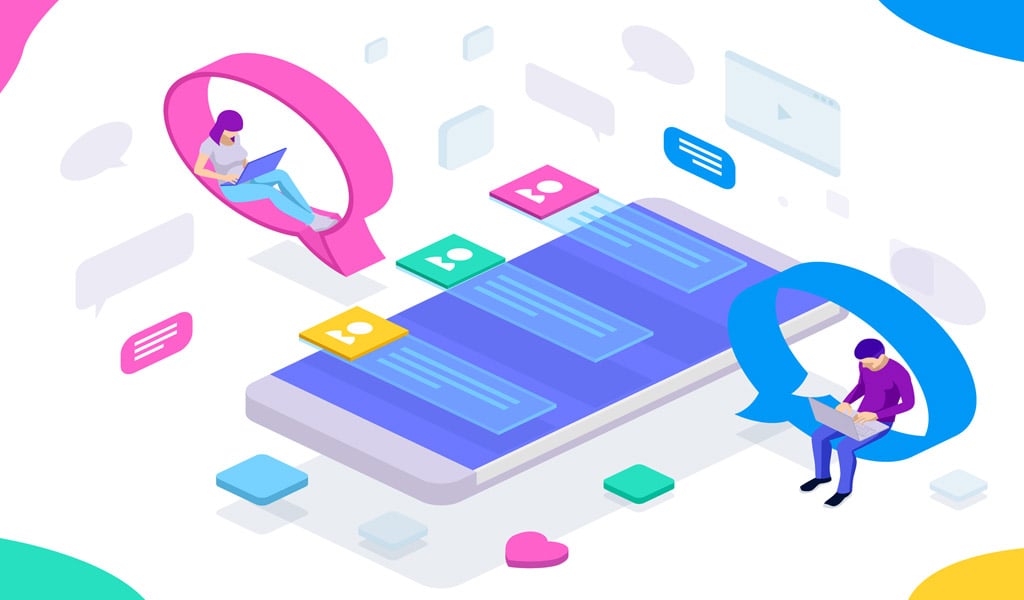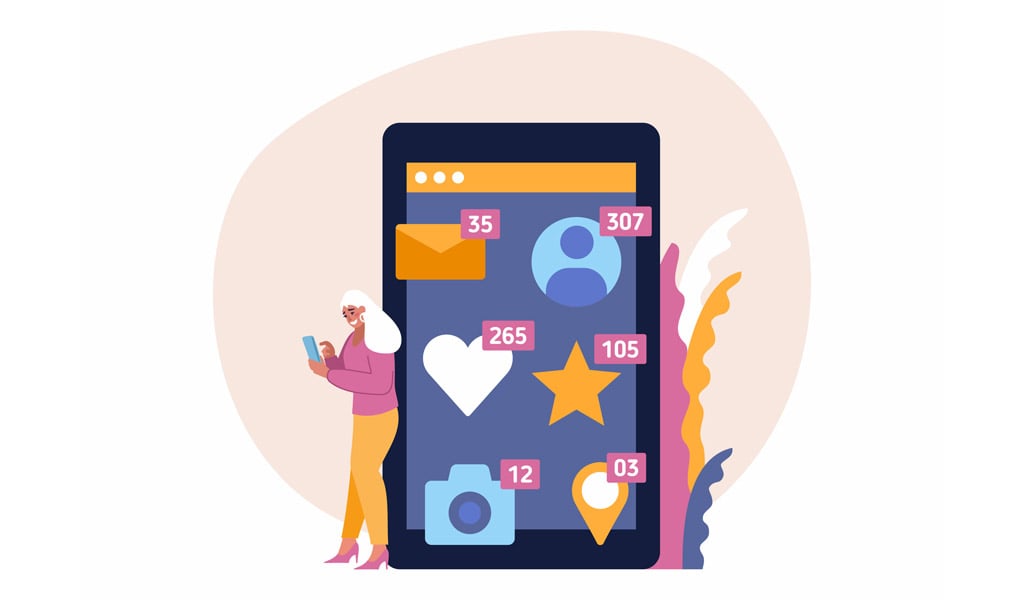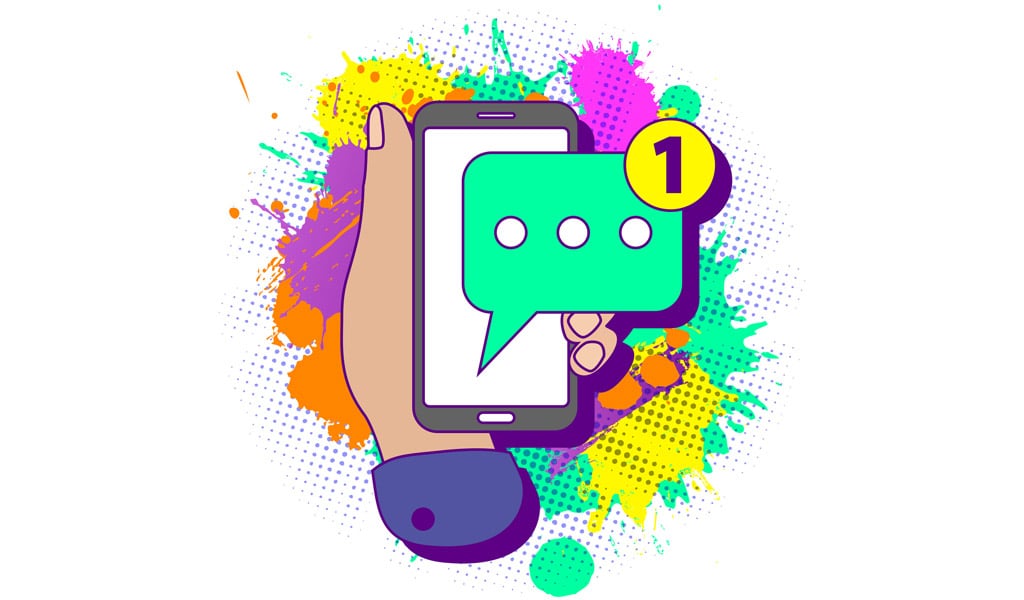
In-app notifications can be a great way to utilize a call to action (CTA) and get the customer to do what you want. This isn’t always about pushing the customer to spend more money directly, but rather a way to tailor their experience. Designers want to ensure that customers are using their app in the way it’s intended. They want to ensure that customers find what they are looking for in the app, and in-app notifications are a great way to do this. However, when done poorly, they can be extremely annoying to customers.
We’ve all been there. You’re having fun browsing an app or playing a game, and all of a sudden you are stopped dead in your tracks by an annoying pop-up. You are taken out of your task and the content you are presented with seems irrelevant to you. These poorly executed in-app notifications will be seen as spam and may cause customers to simply delete your app.
We live in a world where time is limited, patience is out of fashion, and convenience is in fashion. If you make your app inconvenient and get in the way of your customer’s actions (asking for their patience while they click the X button several times), you are offering poor customer experience.
Customer experience is now one of the top ways that businesses compete, so you can’t afford to not offer excellent experiences to your customers. We can guarantee that your customers have used apps more spammy than yours, and apps much less spammy than yours. You don’t want to be put in the spammy category. Customers have higher standards and expectations than ever, so they will compare your in-app notifications to the other apps that they use. And people use a lot of apps in 2020. In fact, the average person has 80 different apps installed on their phone. That’s 80 apps customers can compare your app to. That’s also 80 apps you’re competing with for space on the phone and attention from the customer.
You simply can’t afford to get this wrong! But don’t worry, we’re going to tell you how to get in-app notifications right.
Why Use In-App Notifications?
If in-app notifications are often seen as spammy or annoying, and potentially risk having your app deleted altogether, then why use them at all? Because when used correctly, they are a great way of engaging your customers. One study found that apps that send in-app messages still report 46% of users using the app after 3 months. For apps without in-app messages, this figure was a mere 13%.
This means that not utilizing in-app notifications is similar to the user deleting your app. If they’re hardly using your app, then it’s not much better than them not having your app at all. But equally, if you go too far with in-app notifications, you risk they will stop using your app anyway.
It’s important to understand this study as the relationship between carefully managed in-app notifications vs no notifications. By this we mean, don’t take it to mean that more notifications mean more engagement. If you fall into this trap, you might be tempted to keep increasing the number of notifications in your app to chase after an even higher engagement. This simply won’t work.
How to Use In-App Notifications
In the next section, we will go more in-depth about the best practices for in-app notifications and some examples of how to use them. However, it’s important to first establish the scope of in-app notifications. What are their use cases? Here are some common examples of the ways in-app notifications are used:
- To onboard new users.
- Suggest additional features or products.
- To upsell to customers.
- To prompt users to complete actions like completing their profile or completing an order.
- Prompt users to update the app to the latest version.
- To inform users of new updates or changes to the app.
- To guide users on how to use the app optimally.
- Marketing.

Best Practices for In-App Notifications
Customer On-boarding
Welcome new users with a welcome message and include key information in this message. It’s important to not overwhelm the customer with information here. Keep the message short and just include the information you think is most important. You can include a “Get Started” link in the welcome message that will send the customer directly to a page where they can create their profile or complete other actions.
It’s important to be friendly and light-hearted in this welcome message and also let the customer know how they can contact you if they want to.
If you intend to utilize an onboarding dashboard that splits the onboarding process into several sections, then it’s a good idea to also include a progress bar. A good example of this is LinkedIn. It’s quick and easy to sign up for a LinkedIn account, and users can complete their profile information at their own pace. However, LinkedIn provides a progress bar so users can see how complete their profile is. Occasionally they might receive in-app notifications to say “Complete your profile” or “Got a few minutes? add your education”.
Splitting the onboarding process into sections that can be completed separately is a great idea. This means your customers will be more engaged because you are not demanding a lot of their time. If you require that they fill out their whole profile in one go, they might be put off completing the action. Even worse, if you don’t save progress unless they have completed the whole process, many customers will become frustrated and not fill the profile in after one failed attempt. It also means you can send them more in-app notifications as reminders and to keep them engaged.
Be Personal
Use the customer’s name in your in-app communications. Customers want to feel like they are a valued customer and a real person. You can do this by using their name in your communications. More personalization is always a good thing when it comes to customer experience.
You can also send personalized notifications to customers based on products or features you think they will be interested in. For example, if they have connected their Apple watch, then you could send them a notification letting them know how to use your app on their watch. This message would be useless for customers who don’t have an Apple watch. Spotify does this by notifying customers that they can use their Google Home speaker to access songs. The message is tailored to include an example of an artist that the customer listens to. This strategy wouldn’t work if the customer didn’t have a Google powered speak or didn’t listen to that artist.
Timing is Everything
Timing is the difference between giving the customer something to do (that they are happy with) and interrupting their flow. You can tailor your app so that a notification is triggered when the customer completes an action. For example, if you have a notification that asks the customer to rate your app, then it’s best to ask them to do this after they have made a purchase, completed a level, or so on. This is because you are asking them to do something after they have already done what they came to the app to do. They might just be about to close the app for the day, so this is a good opportunity to reach out to them.
The alternative to this is time-based notifications. For example, every week on a Friday, the customer will be asked to rate the app. Or maybe the customer will be asked to rate the app after using it for 5 minutes every time they use the app if they have not already rated it. These types of time-based notifications often cause customers to become frustrated because they are indiscriminate. It doesn’t matter if the user was in the middle of putting their card details in, in the middle of a high stakes game, or simply browsing. They are all treated the same, and this means that customers who are interrupted will become annoyed.
Provide Incentives for Push Notifications
This article is primarily about in-app notifications but push notifications do come into the equation too. Why? Because most businesses will ask the user for permission to send push notifications by using an in-app notification. The key to getting this permission is to provide the user with an incentive to do this, rather than asking them as soon as they open the app.
We now receive notifications from apps all day, every day. This has caused customers to be much more cautious about which apps they grant this permission. People are also becoming more cautious of the effects constant technology use has on our brain and wellbeing. You’re not just competing with other apps, you’re also competing with a changing culture around how we should use technology.
So how do you provide an incentive? The popular flight search app Skyscanner does this by waiting until the customer is browsing flights and then asks them whether they want to be alerted if prices change. This is great because most customers are using this app because they want to find the cheapest deals on flights. They are already interested in the price of flights, and they are interested in getting them for the cheapest price. If they turn on push notifications, then they are one step closer to this goal of getting the cheapest flight possible.

Things to Avoid
Sending the Same Messages to Everyone
This ties into personalization and is essentially the opposite of it. Let’s say you have a new update that significantly changes the look and feel of your dashboard. You might want to send a message to your customers to let them know what’s different and how they can use the new features. However, this message shouldn’t go to new users. They were not familiar with the old dashboard, so they don’t need to know how it has changed. This message will simply be annoying and most likely ignored.
Sending the Same Message Repeatedly
Set a limit on how many times you will send the customer the same message. Sometimes it’s simply not the right time and the customer just needs a reminder at a later date. However, sometimes the customer just isn’t interested in that option at all. If you continue to send them this notification when they have displayed no interest in it repeatedly, you risk frustrating them. It can come across as forceful, as though you won’t stop until you get what you want. Like you are trying to wear the customer down rather than provide a good customer experience. If you do this with something like a request for a review, it can backfire on you.